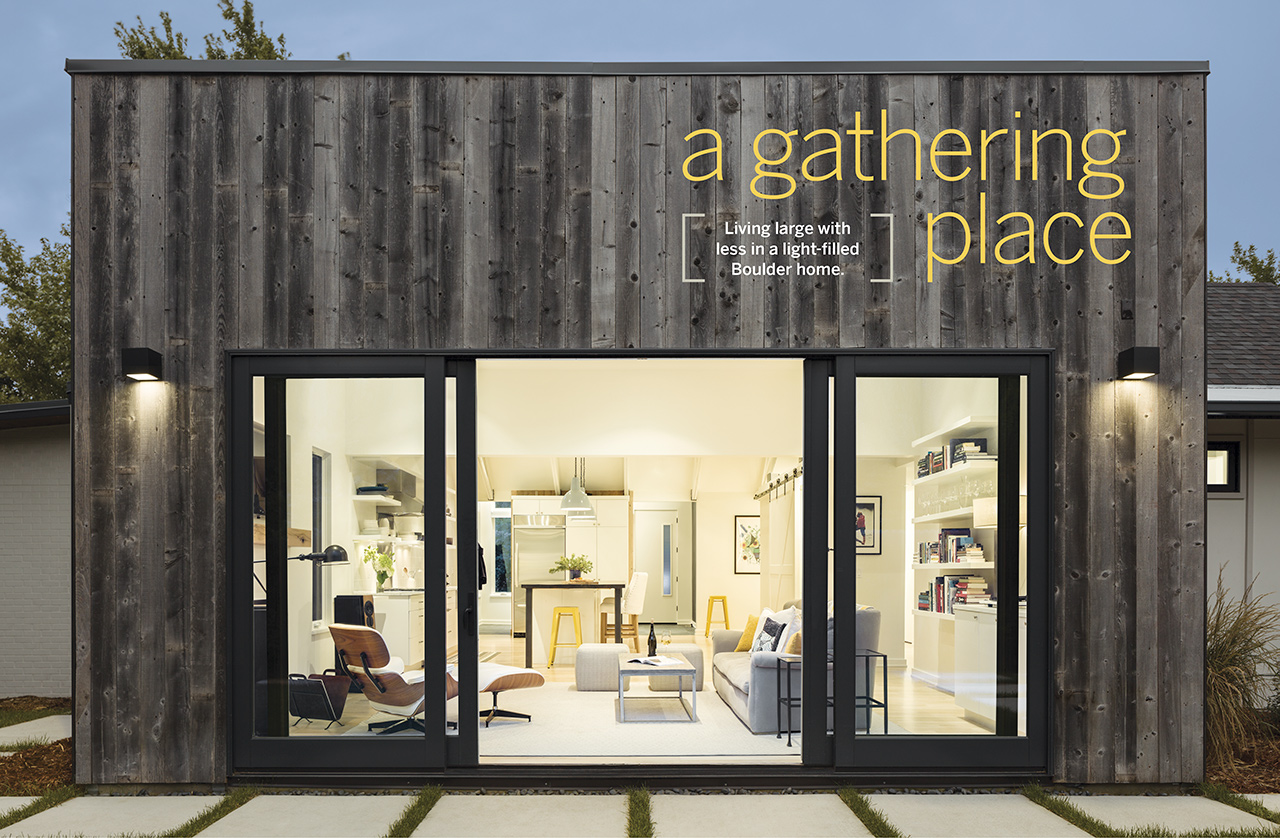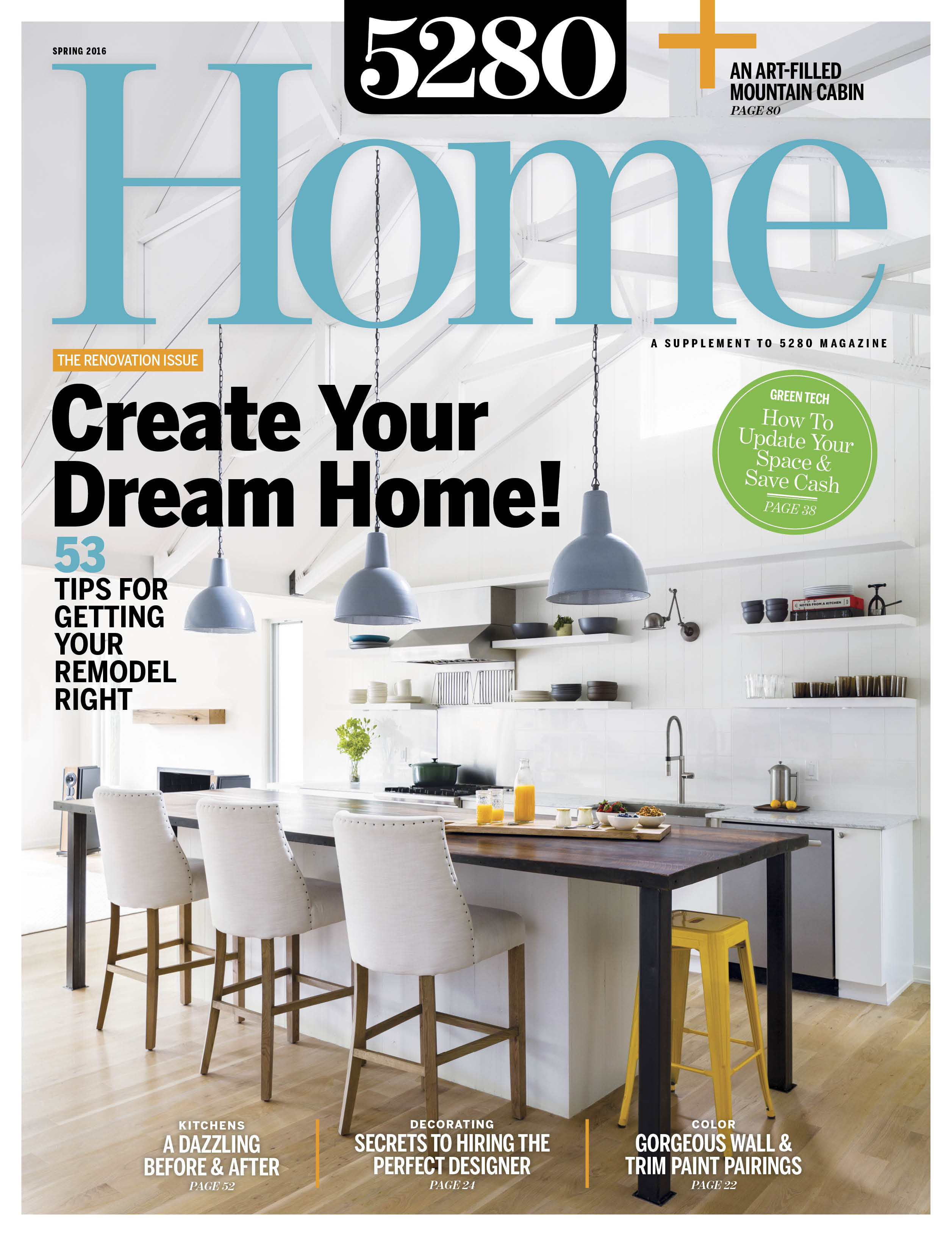The Local newsletter is your free, daily guide to life in Colorado. For locals, by locals.

In the oasis of single-story, post-World War II homes in Boulder’s Old North neighborhood, this one was what you might generously call retro:
Gravel covered the space where the lawn should be, and the interiors were awash in unfortunate shades of Pepto-Bismol pink and avocado green. Despite its lack of appeal—curb or otherwise—the 1958 brick ranch didn’t scare architect Dale Hubbard or his clients, young professionals who hired Hubbard to bring an unexpected, hip cachet to the 1,400-square-foot house. “My clients already had a great design sensibility,” says Hubbard, a principal at Surround Architecture in Boulder. “And they live a ‘less is more’ lifestyle, so we knew we could generate an efficient floor plan that would result in a great place for them to live and entertain.”

Replacing the gravel yard and overgrown landscaping was an obvious fix. But it was the existing L-shaped floor plan that presented Hubbard with bigger design challenges. “Although ranches are generally malleable structures that can be reimagined and updated, this layout didn’t work at all,” Hubbard says. The front door opened directly into the living room, while a tiny galley kitchen was wedged in a separate room altogether. The architect’s solution? “We decided early on to remove the roof and all the interior walls, which was a clear way to reset everything,” he says. At his clients’ request, the kitchen would become the heart of the house, a gathering space for friends and family.
Mindful of the couple’s wish to maintain the home’s scale and profile among its modest neighbors, Hubbard devised a plan that reused the existing footprint and vaulted the ceilings to gain volume. He then strategically added 100 square feet at the front of the house—in the crook of the L—to establish a mudroom and a clear entry sequence that guides visitors into the kitchen and the spacious great room beyond.
The kitchen’s exposed scissor trusses, neatly paired and painted, replace the old low ceilings, providing eight additional feet of lofty space over the cooking area. As a centerpiece, a striking 12-foot-long island was crafted from wood floor joists reclaimed from historic Mapleton Elementary, which is nearby. The espresso-stained countertop contrasts with the otherwise crisp palette of the base cabinets, walls, and white-oak floors. To avoid visual clutter, the homeowners decided against upper cabinets, instead choosing floating shelves that neatly support stacked Heath Ceramics bowls and plates.

Expanding on the idea of creating a gathering space, Hubbard tucked an additional 400 square feet at the back of the house for the great room extension. Full-height sliding glass doors flood the new space with light and connect the home to an intimate backyard, which increases entertaining options. “The open and layered plan minimizes circulation paths,” Hubbard says. “Each room naturally unfolds into the next, while varied ceiling heights help make the small house feel bigger.”
In keeping with the homeowners’ minimalist approach, Hubbard designed a unique storage and home-office space that takes inspiration from the built-ins you might find on a boat to concurrently boost storage and separate public space from private. The room houses a desk and cabinets that open to the kitchen and a laundry area that conveniently opens to the bedroom hallway. The space is simply closed off (by sliding barn doors) when the owners entertain.

The last touches of the home’s renovation completed the owners’ wishes for simplicity, beauty, and functionality. Hubbard transformed the former living room (replete with the original fireplace) into the master bedroom. “By vaulting the ceiling and expanding the window opening, we discovered the room has great views of the Flatirons,” he says. To provide a modern feel, the red brick exterior was painted white, and the additions were clad in weathered Wyoming snow fence. A new, covered entry porch with steel columns welcomes guests to this fresh interpretation of midcentury-ranch style—and there’s nary an avocado green wall in sight.









